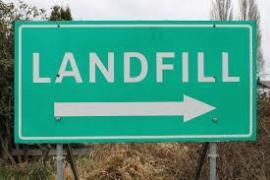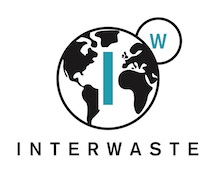-
Courses

Courses
Choosing a course is one of the most important decisions you'll ever make! View our courses and see what our students and lecturers have to say about the courses you are interested in at the links below.
-
University Life

University Life
Each year more than 4,000 choose University of Galway as their University of choice. Find out what life at University of Galway is all about here.
-
About University of Galway

About University of Galway
Since 1845, University of Galway has been sharing the highest quality teaching and research with Ireland and the world. Find out what makes our University so special – from our distinguished history to the latest news and campus developments.
-
Colleges & Schools

Colleges & Schools
University of Galway has earned international recognition as a research-led university with a commitment to top quality teaching across a range of key areas of expertise.
-
Research & Innovation

Research & Innovation
University of Galway’s vibrant research community take on some of the most pressing challenges of our times.
-
Business & Industry

Guiding Breakthrough Research at University of Galway
We explore and facilitate commercial opportunities for the research community at University of Galway, as well as facilitating industry partnership.
-
Alumni & Friends

Alumni & Friends
There are 128,000 University of Galway alumni worldwide. Stay connected to your alumni community! Join our social networks and update your details online.
-
Community Engagement

Community Engagement
At University of Galway, we believe that the best learning takes place when you apply what you learn in a real world context. That's why many of our courses include work placements or community projects.
About the SAFER Project
About the SAFER project?
 In its document “Manifesto for a Resource Efficient Europe”, the EU recognises that it has no choice but to transition to a resource-efficient and ultimately regenerative circular economy. China’s refusal to accept foreign waste for treatment from 1st January 2018, underlines the urgency of Europe’s need to develop its own circular economy. As an alternative to a traditional linear economy, a circular economy is one in which resources are kept in use for as long as possible. Maximum value is extracted from resources whilst in use, with products and materials recovered and regenerated at the end of each service life. The SAFER project hypothesises that the presence of persistent organic chemicals (either currently or potentially subject to restriction) in plastic components of waste consumer products such as electronics, building insulation, as well as furniture fabrics and foam to impart flame retardancy, presents a potential (yet surmountable) barrier to the ongoing use, re-use and recycling of such waste products within a circular economy. This issue has been highlighted by research by the project team and others that has demonstrated the presence of restricted flame retardants (FRs) i.e. polybrominated diphenyl ethers (PBDEs) and hexabromocyclododecane (HBCDD) in plastic toys, food contact articles, and polystyrene packaging from a number of countries (including Ireland) despite such items not needing to meet flame retardancy regulatory requirements. That such contamination arises due to use of recycled polymers is underlined by the EPA-funded WAFER study recently completed by the project team that demonstrated the presence of PBDEs and HBCDD in 538 waste articles obtained in Ireland.
In its document “Manifesto for a Resource Efficient Europe”, the EU recognises that it has no choice but to transition to a resource-efficient and ultimately regenerative circular economy. China’s refusal to accept foreign waste for treatment from 1st January 2018, underlines the urgency of Europe’s need to develop its own circular economy. As an alternative to a traditional linear economy, a circular economy is one in which resources are kept in use for as long as possible. Maximum value is extracted from resources whilst in use, with products and materials recovered and regenerated at the end of each service life. The SAFER project hypothesises that the presence of persistent organic chemicals (either currently or potentially subject to restriction) in plastic components of waste consumer products such as electronics, building insulation, as well as furniture fabrics and foam to impart flame retardancy, presents a potential (yet surmountable) barrier to the ongoing use, re-use and recycling of such waste products within a circular economy. This issue has been highlighted by research by the project team and others that has demonstrated the presence of restricted flame retardants (FRs) i.e. polybrominated diphenyl ethers (PBDEs) and hexabromocyclododecane (HBCDD) in plastic toys, food contact articles, and polystyrene packaging from a number of countries (including Ireland) despite such items not needing to meet flame retardancy regulatory requirements. That such contamination arises due to use of recycled polymers is underlined by the EPA-funded WAFER study recently completed by the project team that demonstrated the presence of PBDEs and HBCDD in 538 waste articles obtained in Ireland.
The WAFER project showed that in 2016, 33,004 kg/year of PBDEs and HBCDD were entering the Irish waste stream. To prevent further contamination of new products with PBDEs and HBCDD, POPs regulation (EC) No 850/2004 has introduced low POP concentration limit (LPCL) values that are designed to “close the material loop” by removing POPs from waste products before they enter the recycling stream. Waste articles containing PBDEs or HBCDD at a concentration exceeding 1,000 mg/kg may not be recycled; furthermore, new articles may not be sold if they contain >100 mg/kg of PBDEs or HBCDD. While the WAFER project demonstrated that effective enforcement of the LPCL values for waste articles would result in removal from the Irish waste stream of ca. 98 % of the estimated 33 t PBDEs and HBCDD generated annually in Ireland; it also addressed the scale of the challenge faced in monitoring compliance with LPCL values. Specifically, conventional methods for measuring concentrations of PBDEs and HBCDD in waste are destructive, time-consuming, expensive, required expert operators, and cannot be conducted in situ at waste sites. WAFER thus evaluated the feasibility of using portable XRF instruments that measure bromine as a surrogate indicator of the PBDE and HBCDD content of waste. Results showed portable XRF to be a potentially effective tool for screening waste polymers to identify articles that exceed the LPCL value. A potential obstacle to this however, is that while XRF correctly identified that 8.7 % of articles tested exceeded the LPCL value, a further 6.3 % were incorrectly identified as exceeding the LPCL value. Such errors (defined hereafter as “false exceedances”) were attributed to concentrations of non-regulated brominated flame retardants (BFRs). While roughly half of these “false exceedances” were shown to be caused by high concentrations of tetrabromobisphenol-A (TBBP-A), the rest were likely due to elevated concentrations of so-called “novel” BFRs (NBFRs). While this cannot currently be confirmed as determination of the presence of NBFRs was outside the remit of WAFER, its plausibility is underlined by preliminary data emerging from the EPA-funded ELEVATE project that has shown concentrations of the NBFR decabromodiphenyl ethane (DBDPE) to be highly elevated in indoor air and dust from Irish cars, homes, offices, and school classrooms. WAFER identified that as NBFRs increasingly replace PBDEs and HBCDD, that the incidence of false exceedances would also rise, casting doubt on the effectiveness of XRF as a tool for checking LPCL compliance. A potential rapid and cost-effective indicator of whether an apparent exceedance of LPCL values for PBDEs in hard plastics indicated by XRF measurement of bromine is correct, was suggested recently by Guzzonato et al3. The authors proposed the hypothesis that simultaneous detection of elevated concentrations of antimony AND bromine in a hard plastic sample (e.g. high impact polystyrence (HIPS) or acrylobutadiene styrene (ABS)) for which the bromine concentration indicated an LPCL exceedance, would provide confirmatory evidence that the bromine detected was due to the presence of PBDEs and thus that the exceedance was genuine. The hypothesis was based on their data showing variable Sb:Br ratios in hard plastic articles containing recycled polymers and reports that Sb2O3 was used in such articles as a co-synergist in an approximately 1:3 ratio alongside PBDEs, but was not used alongside other non-regulated BFRs like TBBP-A.
As the above indicates, research conducted to date on the presence of persistent organic chemicals in the waste stream has focused very largely on regulated BFRs, specifically PBDEs and HBCDD. This is potentially a substantial omission however, given the very widespread use of other such chemicals in consumer articles. The first example of this is perfluoroalkyl substances (PFAS) of which three specific chemicals (perfluorooctane sulfonate (PFOS), perfluorooctanoic acid (PFOA), and perfluorohexane sulfonate (PFHxS)) are – like PBDEs and HBCDD - listed (PFOS), recommended for listing (PFOA) or under review for listing (PFHxS) under the UNEP Stockholm Convention on POPs. PFAS have been very widely used to impart stain repellency/water resistance to consumer articles such as domestic, office, and vehicular fabrics and carpets. Moreover, as alluded to above, restrictions on the use of PBDEs and HBCDD has likely led to increased use of NBFRs as replacements, with resultant implications for human exposure, exemplified by UK data showing NBFRs (tetrabromoethylcyclohexane (TBECH), 1,2-bis(2,4,6-tribromophenoxy)ethane (BTBPE), 2-ethylhexyl tetrabromobenzoate (EH-TBB), bis(2-ethlyhexyl)tetrabromophthalate (BEH-TEBP, and decabromodiphenyl ethane (DBDPE)) to be more frequently detected in human milk collected in 2014-15 than in 2015. Finally, WAFER highlighted that while a substantial number of waste furniture and vehicle fabrics exceeded LPCL values for Deca-BDE and HBCDD, there were fewer LPCL exceedances for furniture foam and none at all for vehicle foam samples. As such foam samples are required to meet flame retardancy regulatory standards, this suggests that other chemical FRs are used in such foams. Analysis by the project team of UK home and office furniture foams6 – coupled with studies of car, home, and office dust7 – suggests that they are flame-retarded by the addition of chlorinated organophosphate FRs (Cl-PFRs) such as tris (1-chloro-2-propyl) phosphate (TCIPP) and – particularly in vehicles – tris (1,3-dichloro-2-propyl) phosphate (TDCIPP).
Given the growing concerns about the adverse environmental and human health impacts about many PFAS, NBFRs, and Cl-PFRs, coupled with their widespread use in consumer articles, there is thus a pressing need to quantify the extent to which these chemicals are present in the Irish waste stream, in order that strategies to address this potentially very substantial issue may be developed.
















